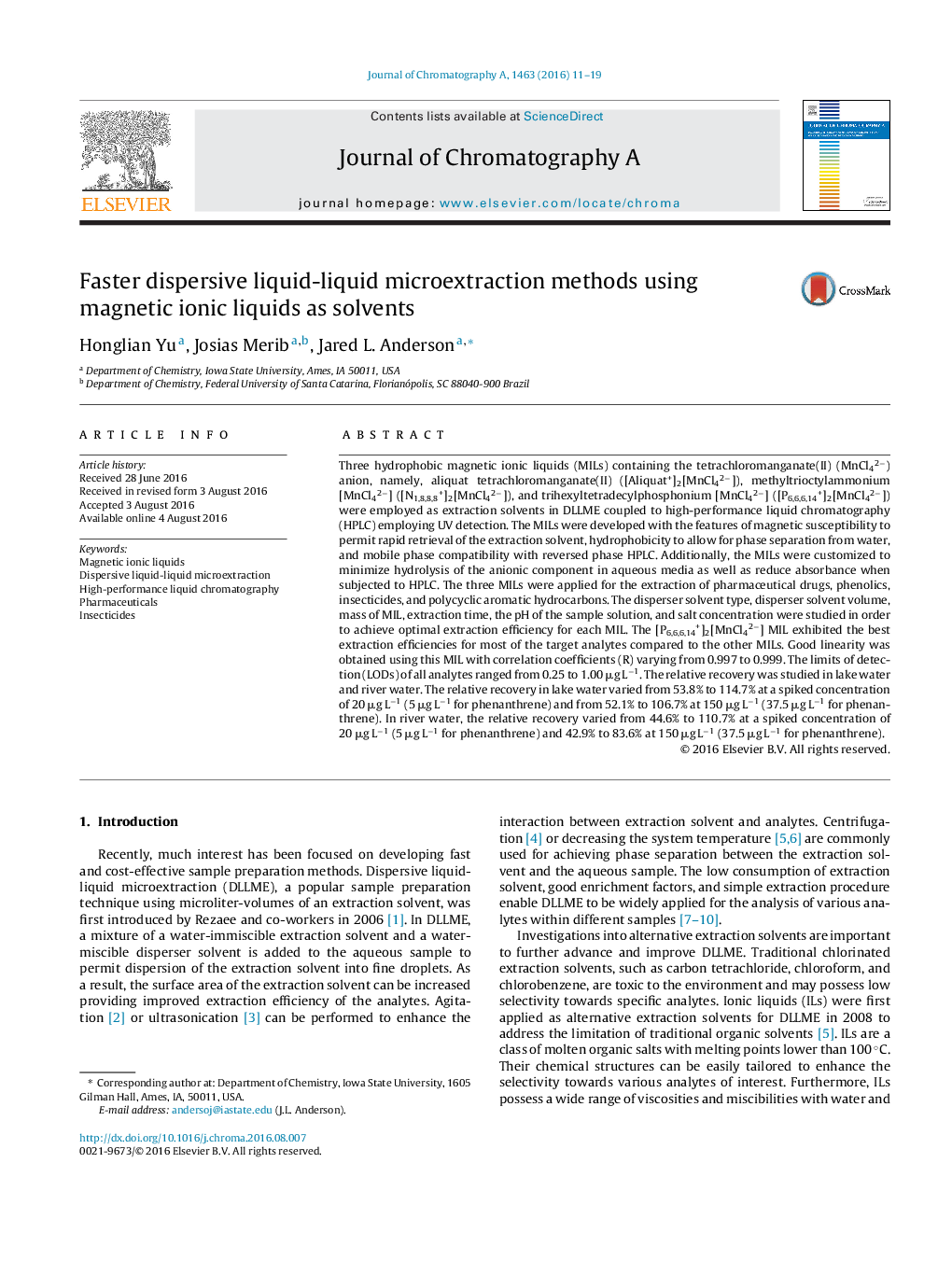| کد مقاله | کد نشریه | سال انتشار | مقاله انگلیسی | نسخه تمام متن |
|---|---|---|---|---|
| 1198326 | 1493463 | 2016 | 9 صفحه PDF | دانلود رایگان |
• HPLC-compatible hydrophobic MILs were developed as solvents in DLLME.
• The [MnCl42−] anion produces MILs less susceptible to hydrolysis compared to [FeCl4−].
• Low UV absorbance was observed for MILs containing the [MnCl42−] anion.
• Magnetic retrieval of MIL after phase separation in DLLME is simple and fast.
Three hydrophobic magnetic ionic liquids (MILs) containing the tetrachloromanganate(II) (MnCl42−) anion, namely, aliquat tetrachloromanganate(II) ([Aliquat+]2[MnCl42−]), methyltrioctylammonium [MnCl42−] ([N1,8,8,8+]2[MnCl42−]), and trihexyltetradecylphosphonium [MnCl42−] ([P6,6,6,14+]2[MnCl42−]) were employed as extraction solvents in DLLME coupled to high-performance liquid chromatography (HPLC) employing UV detection. The MILs were developed with the features of magnetic susceptibility to permit rapid retrieval of the extraction solvent, hydrophobicity to allow for phase separation from water, and mobile phase compatibility with reversed phase HPLC. Additionally, the MILs were customized to minimize hydrolysis of the anionic component in aqueous media as well as reduce absorbance when subjected to HPLC. The three MILs were applied for the extraction of pharmaceutical drugs, phenolics, insecticides, and polycyclic aromatic hydrocarbons. The disperser solvent type, disperser solvent volume, mass of MIL, extraction time, the pH of the sample solution, and salt concentration were studied in order to achieve optimal extraction efficiency for each MIL. The [P6,6,6,14+]2[MnCl42−] MIL exhibited the best extraction efficiencies for most of the target analytes compared to the other MILs. Good linearity was obtained using this MIL with correlation coefficients (R) varying from 0.997 to 0.999. The limits of detection (LODs) of all analytes ranged from 0.25 to 1.00 μg L−1. The relative recovery was studied in lake water and river water. The relative recovery in lake water varied from 53.8% to 114.7% at a spiked concentration of 20 μg L−1 (5 μg L−1 for phenanthrene) and from 52.1% to 106.7% at 150 μg L−1 (37.5 μg L−1 for phenanthrene). In river water, the relative recovery varied from 44.6% to 110.7% at a spiked concentration of 20 μg L−1 (5 μg L−1 for phenanthrene) and 42.9% to 83.6% at 150 μg L−1 (37.5 μg L−1 for phenanthrene).
Journal: Journal of Chromatography A - Volume 1463, 9 September 2016, Pages 11–19
